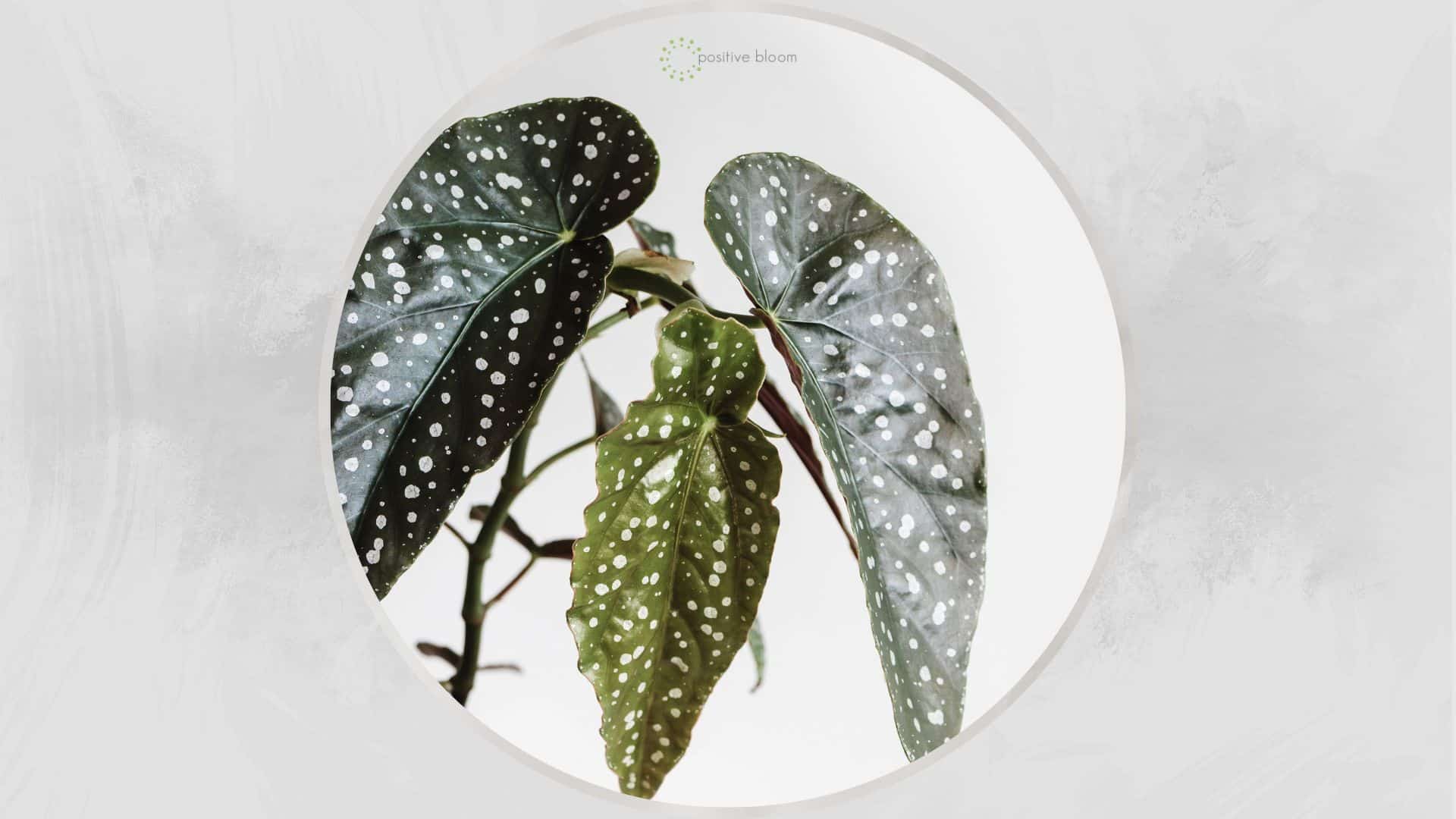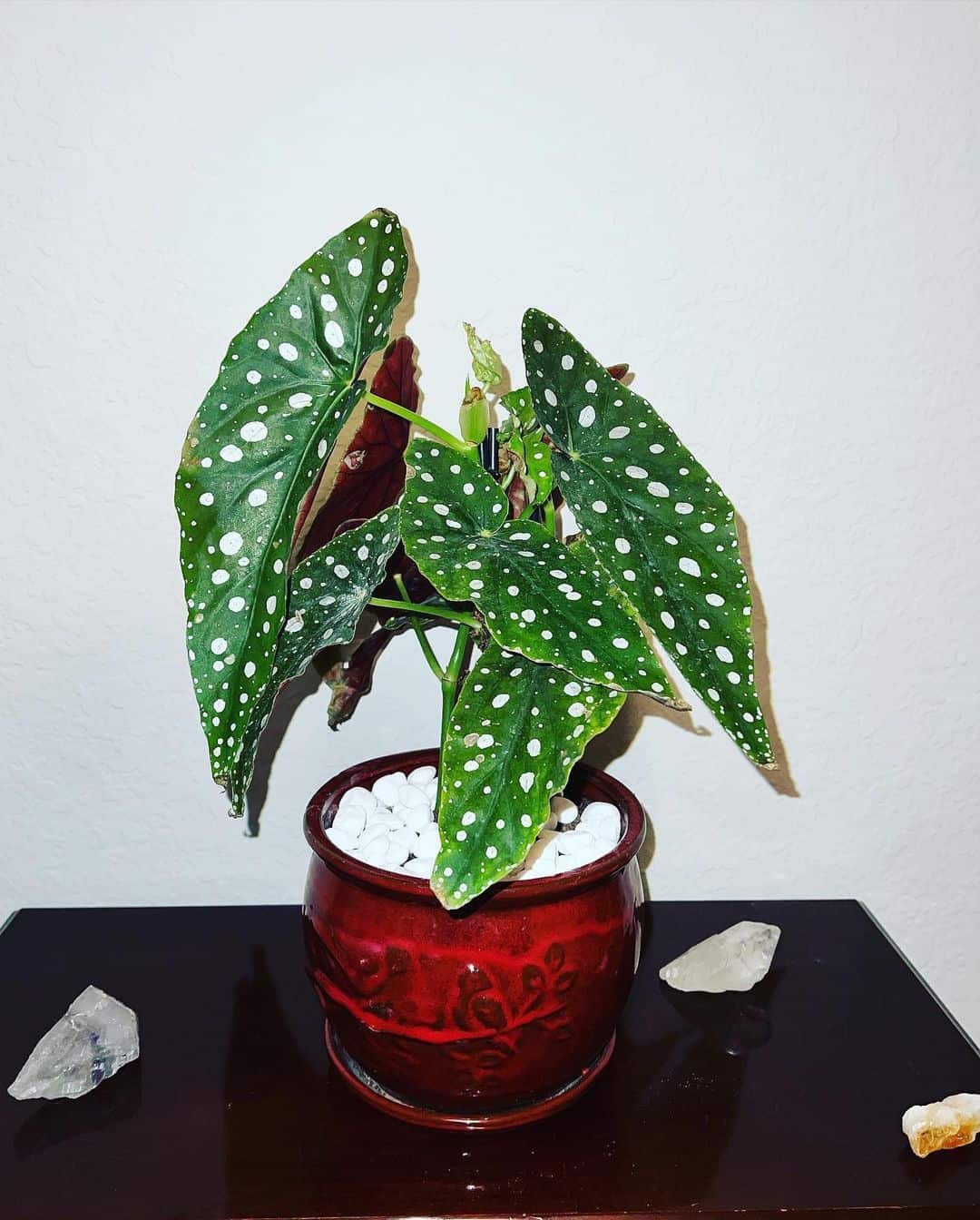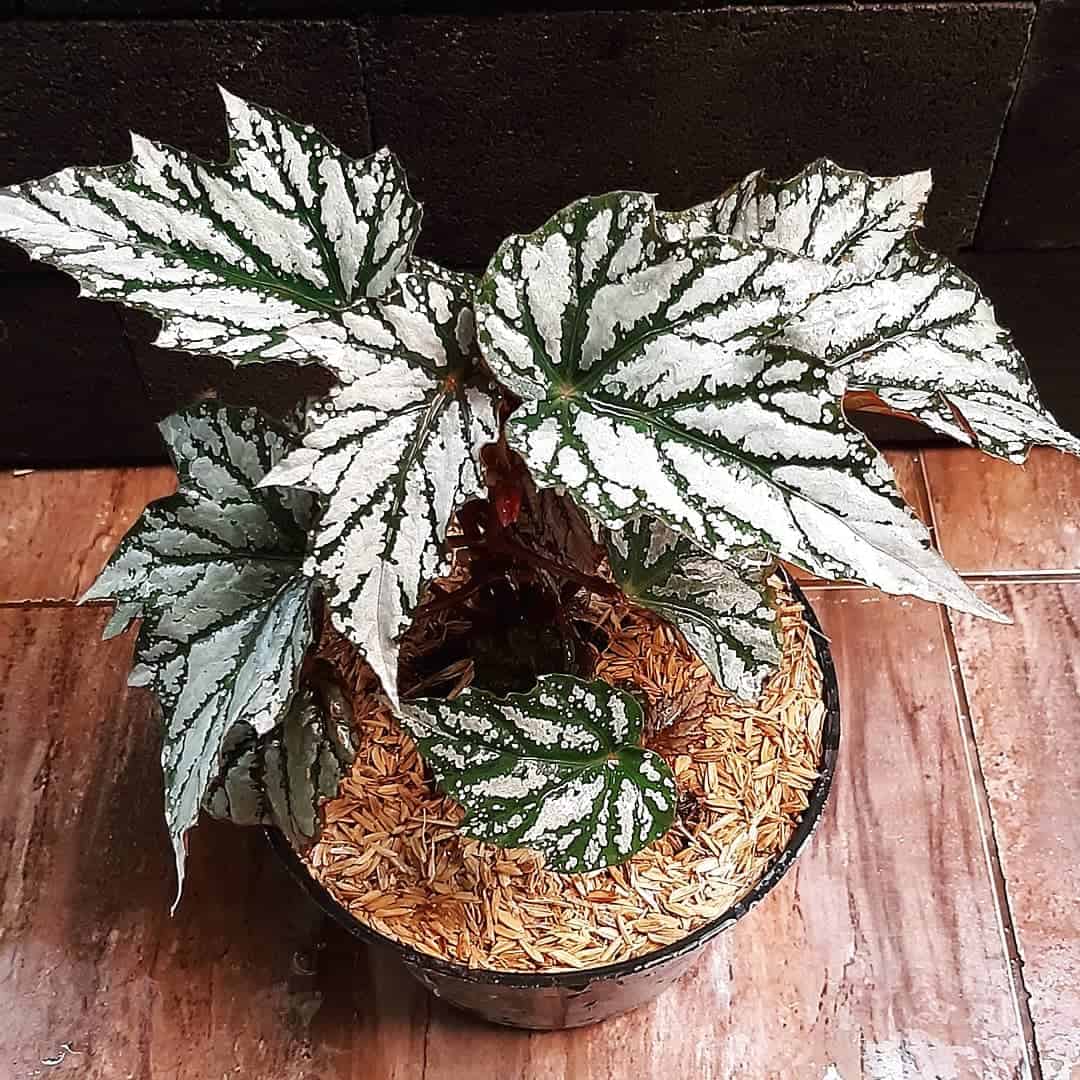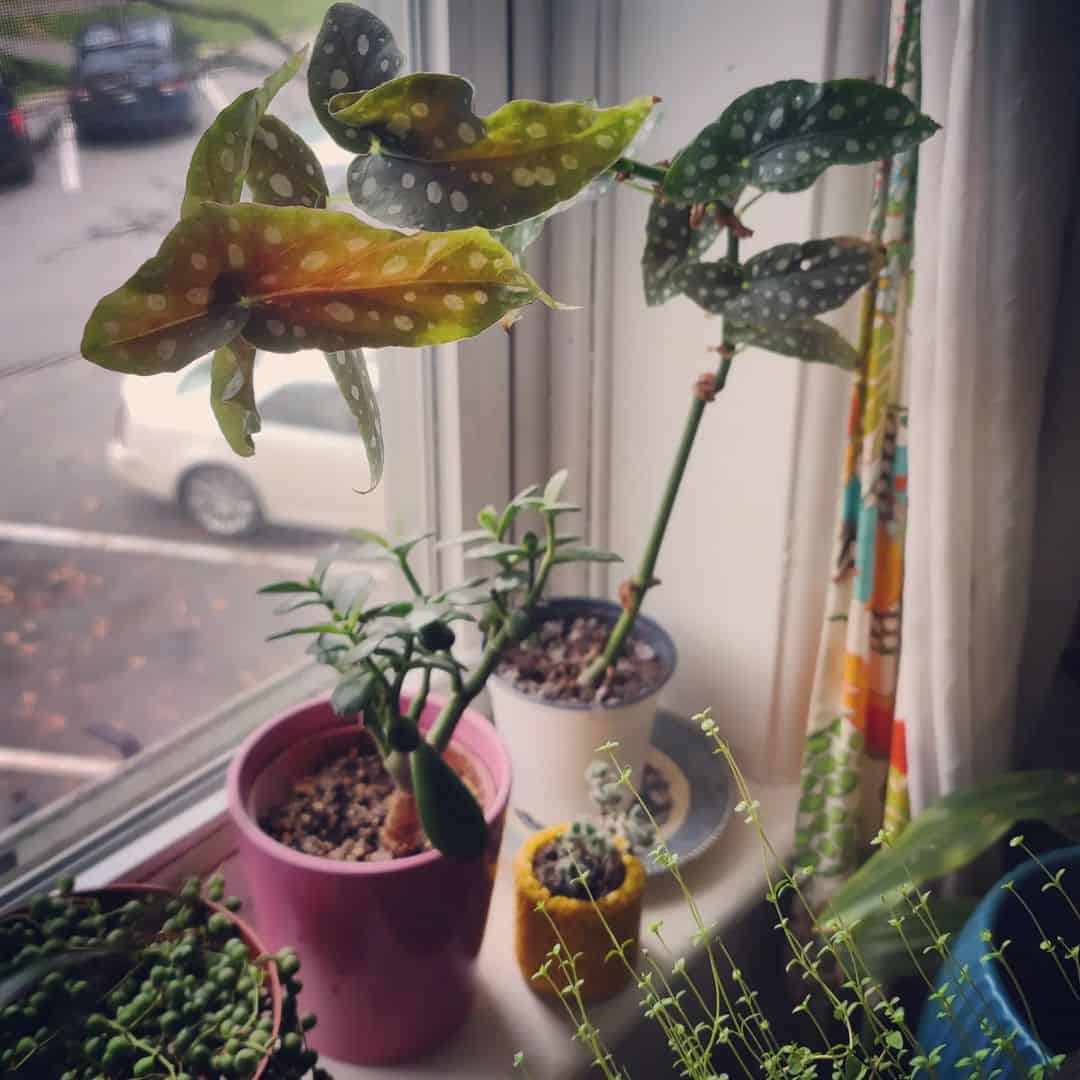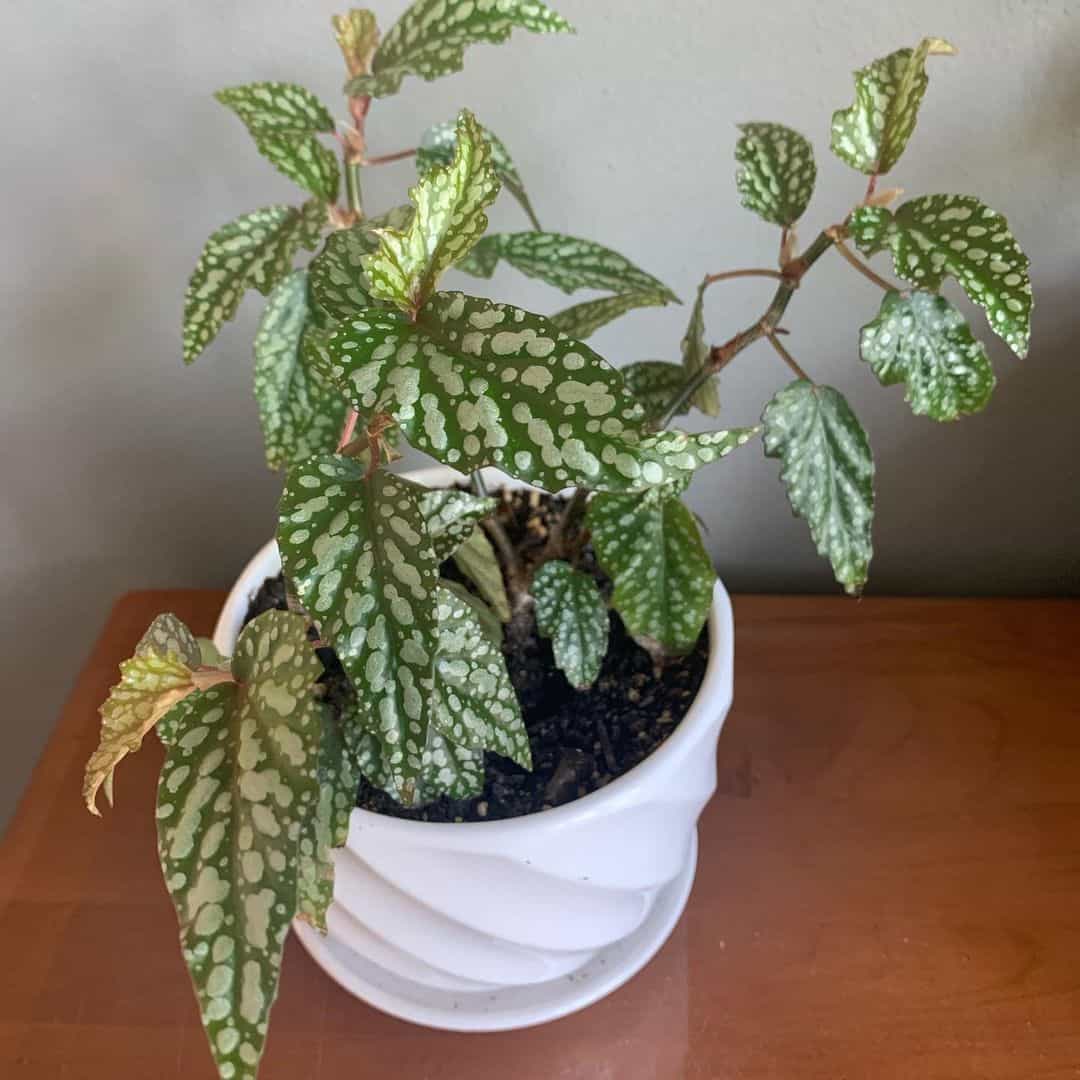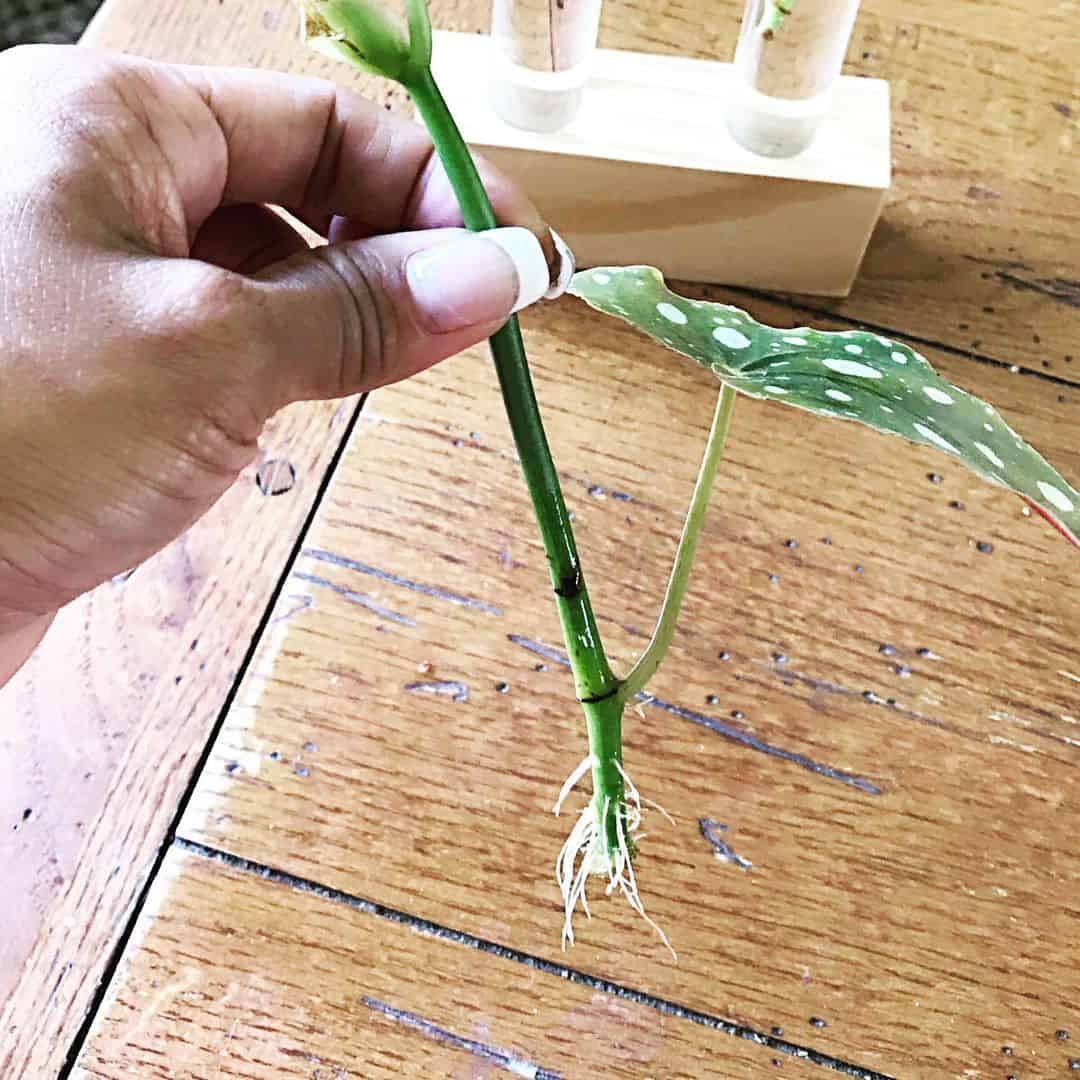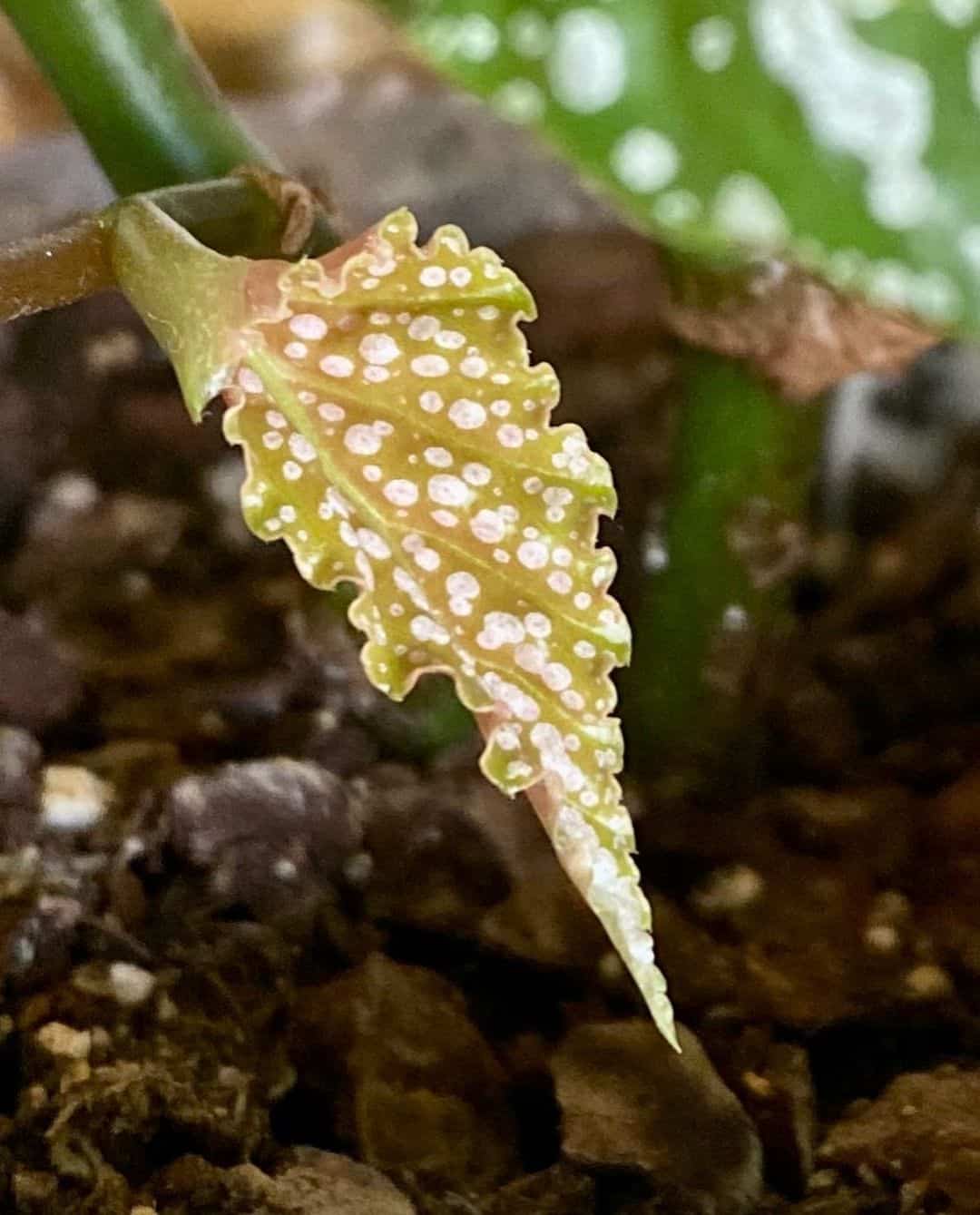Stunning Begonia plants are always an excellent choice, whether it’s as outdoor plants or houseplants. You can choose between many Begonia varieties, and each one will take your breath away!
Today, I’ll tell you more about a really special and eye-catching Begonia, the angel wing Begonia.
Polka dots, amazing coloring, and lovely flowers are all features of this unique plant. It’s a cane Begonia with low care requirements.
If you have or are planning to grow one, you should definitely check out our tips for making this Begonia happy and healthy.
Let’s start off with some basic info about this Begonia species.
[table id=568 /]
Angel Wing Begonia: Main Features
Before we move on to the angel wing plant care requirements, let’s take a look at its origin, appearance, and some of the most common cultivars.
The angel wing Begonia belongs to the Begoniaceae family along with another 1,000 species. Although it has many similar features to other Begonias, a couple of things make it stand out.
This tropical plant is pretty small in the first stages of its growth, so you can place it anywhere in your household. As the Begonia angel wing matures, it gets bigger and bigger until it reaches 5 feet tall. Once your Begonia plant grows up, it’ll look lovely in a hanging basket.
How did this plant get its name? I’m sure you can assume that its looks have something to do with angels. If you observe the shape of the leaves, you can conclude they are really similar to angel wings.
Tiny silverish dots adorn the surface of the glossy green leaves, and their undersides come in deep purple.
Begonias are known for their lovely flowers. The Begonia x coraline produces clusters of white, red, orange, and pink flowers.
When given the correct conditions, the Begonia angel wing will produce flowers in summer and the blooming season will end at the beginning of the fall.
Angel Wing Begonia Varieties
There are various Begonia species, including the angel wing Begonia, Begonia maculata, and Begonia beefsteak.
The Angel wing plant has many amazing features, so it’s no wonder so many cultivars have been created.
Here are some of the more prevalent angel wing Begonia varieties.
1. Begonia Charles Jaros: This is a dwarfish cultivar of the Begonia angel wing. It typically reaches 20 inches and produces cute pink flowers.
2. Begonia Anna Christine: This is a large angel wing variety that grows up to 4 feet when given the right environment. Red flowers are the trademark of the Anna Christine variety.
3. Begonia Silver Wings: The foliage of this captivating cultivar is angel wing-shaped and adorned with noticeable silver speckles.
4. Begonia Splash Splash: The leaves of the Splash Splash cultivar are covered in white splashes, and the flowers are deep pink or violet-red.
5. Begonia Looking Glass: This Begonia features lovely silverish-green leaves with noticeable veins and pink flowers.
Angel Wing Begonia Care Guide
If you want to see captivating flowers, you need to meet all this plant’s care requirements.
Here’s a table with an overview of the Begonia angel wing plant requirements:
[table id=569 /]
Let’s get into detail!
Light Conditions
The angel wing plant thrives in bright indirect light. It’s native to tropical regions, in which it doesn’t receive full sun.
It will produce lovely flowers, but only if given enough light. Too much direct sunlight will quickly damage the delicate leaves.
Your angel wing plant won’t produce flowers in lower light conditions, i.e., partial shade.
Humidity Conditions
The Begonia angel wing loves high humidity. This Begonia is also one of the plant species that absorbs moisture from the air well. Good air circulation is essential for the healthy growth of this Begonia.
You can raise humidity with a few excellent DIY methods, for example, making a pebble tray and putting your angel wing plant above it, which will help it receive enough humidity.
You can also mist Begonia leaves or put the plant in a kitchen or bathroom. You can even put your angel wing Begonia near other Begonias, such as Begonia coccinea, or other houseplants, such as orchids, to create a microclimate and raise humidity.
The easiest way to raise humidity for your angel wing plant is by using a humidifier.
Temperature Conditions
Your angel wing plant will perform well at room temperature, and a temperature range of 65 to 75 degrees Fahrenheit will promote healthy growth.
The essential thing is not to expose your angel wing plants to lower temperatures. Anything lower than 50 degrees Fahrenheit could be lethal for your precious Begonia.
Regarding USDA growing zones, this Begonia plant species can be grown outdoors in zones 10-11.
Cold drafts and sudden temperature changes can also affect the growth of your Begonia, so make sure to find a spot away from heating or cooling devices and drafty windows.
Soil Type
The ideal soil for the angel wing Begonia would be made of nutrient-rich, well-draining, and porous materials.
The roots of this Begonia need a lot of moisture for optimal growth. African violet potting mix has proven to be an excellent choice for Begonias.
Perlite will improve drainage, and terracotta pots will retain water but prevent water accumulation, which is ideal for helping your angel wing plant thrive.
Watering Schedule
Once you ensure the correct soil mix, watering becomes way easier. This flowering plant requires moist soil, but there should never be excess water in the root system.
Begonias are generally susceptible to overwatering, which could result in fungal diseases. Once the angel wing plant’s potting soil dries about an inch below the surface, water it thoroughly.
Underwatering is also dangerous for your angel wings plant, so don’t wait too long between waterings and check the soil moisture regularly.
Fertilizing Schedule
The Angel wing Begonia will thrive if fed with a liquid fertilizer diluted to half the recommended strength. I suggest fertilizing your Begonia every two weeks for the best results.
Remember that this is a flowering plant, so it will benefit from being fed with fertilizers rich in phosphorus in early spring. An NPK ratio (nitrogen, phosphorus, and potassium) of 5-10-5 should meet the fertilizer requirements of this plant from South America.
It will boost flower development during the blooming season.
Pruning
The only reason we should ever prune the angel wing Begonia is to prevent it from becoming leggy. You should never touch new growth.
You can also remove dead flowers to encourage new growth.
Of course, pruning is essential if your Begonia has any dead or discolored leaves.
How To Repot The Angel Wing Begonia
This plant species has a moderate growth rate and kinda likes to be slightly pot-bound.
So, there’s no hurry when it comes to repotting this eye-catching plant. When grown as an indoor plant, this Begonia will deplete nutrients from the soil mix over time, so it will need a fresh potting mix.
Additionally, the angel wing Begonia will overgrow its pot, so repotting is definitely necessary.
But you need to be very careful when repotting your Begonia. Never pull it out of its current pot.
You can tip the container to one side and let your angel wing plant slide out naturally. Pay attention to conditions after repotting, especially light, as your Begonia will most likely be stressed.
Angel Wing Begonia Plant Propagation
Plant species from the Begonia genus, such as the angel wing Begonia and Begonia maculata, can be quickly propagated utilizing the stem-cutting propagation method.
It’s always best to propagate plants in early spring, i.e., at the beginning of the growing season.
Here are 5 easy steps for angel wing Begonia plant multiplication.
1. Gently cut off a section of the angel wing Begonia’s non-flowering stem with a few nodes; it should be about 3-5 inches long.
2. You can use a rooting hormone to enhance root sprouting at this point, but it’s not obligatory.
3. Fill the nursery pot with a soil mix that has a lot of perlite, and make a small hole.
4. Put the cut end of the angel wing Begonia cutting in the soil mix and pack it with soil.
5. Maintain warmth and moisture until the cutting develops new roots.
Remember that hybrids are generally harder to propagate via seeds (you most likely won’t receive an identical clone of the original plant).
Common Issues
Like all other houseplants, the angel wing Begonia isn’t completely immune to issues such as pests and diseases. Additionally, some problems can occur as a result of incorrect conditions.
Let’s learn more!
Pests And Diseases
Mealybugs and spider mites are the prevalent pests that affect Begonia species. They won’t harm your angel wing Begonia plant unless they start forming large colonies.
Make sure you react immediately if you spot a spider mite or a mealybug on the Begonia leaves.
Neem oil can help you quickly solve the problem with these nuisances.
Powdery mildew, bacterial leaf spot (caused by Xanthomonas campestris pv. vitians bacteria), and root rot are the most common infections you’ll see in the angel wing Begonia.
Root rot causes several serious issues that can jeopardize the health of your Begonia angel wing.
If any of these diseases occur, I recommend cutting off all diseased leaves, repotting your angel wing plant, and treating it with fungicide.
Leaf Discoloration And Deformation
Overwatering is one of the most prevalent causes of all angel wing Begonia issues. The leaves will most likely turn yellow and die off if your Begonia suffers from root rot.
Other signs of root rot include soggy soil, mushy stems, and wilting. If the leaves are yellow but there are no other symptoms of root rot, check light conditions.
Begonia leaves can develop brown tips, which is a tell-tale sign of low humidity. If the topsoil is light brown and dry, you may have underwatered your Begonia.
Before jumping to conclusions, check all conditions.
Wrapping Up
Begonias are one of my favorite indoor plants as they are so easy to maintain and produce lovely flowers.
The stunning angel wing Begonia plant should definitely be on your wishlist for your plant collection. Make sure you put your Begonia somewhere your children or pets can’t reach it because of its toxicity.
If you meet all its requirements, the angel wing Begonia will reward you with unique dotted green leaves year-round and captivating flowers.
Until next time!
Like this post? Share or pin it for later!

